
This past week, I interviewed Shabbir Agha Abbas, a graduate student at Columbia University (MEI/MESAAS) working on Islamic Law and Shari’a Studies. Shabbir holds an MA in Religious Studies from Rutgers University and has been involved in the Muslim World Manuscript project, helping to catalog and describe manuscripts in the RBML collection. Our lively conversation, and Shabbir’s enthusiasm and erudition afforded us a welcome respite from the current challenges around us and served as a refreshing reminder of the power of the human mind to leap across difficulties and find solace in learning and scholarly endeavors.
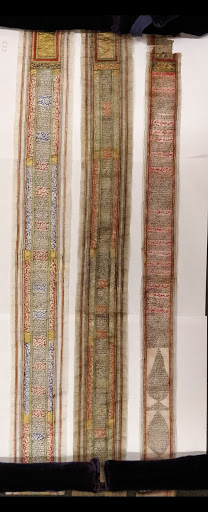
Welcome, Shabbir. Can you please introduce yourself and describe your intellectual interests?
My name is Shabbir Agha Abbas, and I am a native of New Jersey. I grew up just on the other side of the Hudson River, and I am now a graduate student at Columbia University, focusing on Islamic studies. At Rutgers University, I received an M.A. in religion, and during that period I spent some time as an exchange student at Princeton University’s Near Eastern Studies department. There, I was first introduced to Islamic classical works, studying with Professor Michael Cook and Professor Hossein Modarressi. However, it was not until I arrived at Columbia to continue my graduate studies, and in fact, not until I took Professor Tunç Şen’s course on Islamic manuscripts, that I was able to get more closely acquainted with Islamic material culture through our manuscript collections at RBML.
My personal research focuses on the intellectual development of Shi’ism in general, but more specifically on how Shi’i intellectual developments in Najaf and Karbala (Iraq) traveled and took hold in other geographic areas, such as North India. In particular, I focus on the works of a number of late 18th century Shi’i scholars who trained in Iraq and traveled to North India, e.g. Sayyid Dildār ʿAlī Naqawī Naṣīrābādī (d. 1235/1820). Naṣīrābādī is notable for writing important polemical works that led to the alignment of North Indian Twelver Shi’ism with the dominant Uṣūlī tradition of Najaf and Karbala; he wrote Asās al-Uṣūl as a rejoinder against the Akhbārīs of North India, as well as al-Shihāb al-Thāqib against pro-Ṣūfī Twelvers. I have examined these texts, and I recently photographed the latter text at the British Library, in hopes of working on a critical edition in the near future.
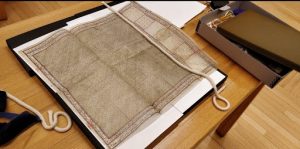
Archives and manuscripts are crucially important for my research, as very little has been published about my area of interest, Shi’ism in North India. Most of the existing resources on the topic are in fact still in manuscript form, which requires me to travel to different library collections in both the West and the Islamic world, scouting for relevant resources. In fact, I have made an effort to go to Iraq, Iran, and Egypt, looking for manuscripts at various libraries. This is a challenging situation, as the regions associated with my research have often and repeatedly experienced different forms of violence, destruction, and instability, posing a special threat to scribal heritage and to sustained scholarly access to manuscripts and libraries. To give some sense of the challenges, consider for example the fact that, while my focus is on North India, as a descendant of partition-era refugees who fled from there to Pakistan, I am unable to visit Awadh, a major scholarly center for my research interests; in fact, when I think about it, it is mostly through manuscripts and other forms of material culture that I am able to evade all sorts of boundaries and continue my research, bridging eras, regions, scholarly interests and research questions, and weaving paths and connections that have been either broken or forgotten. Manuscripts are great connectors, and have always been! (laughs).
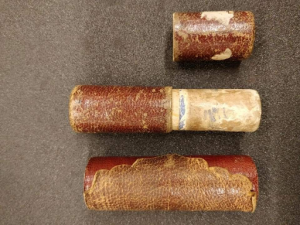
What primary resources (manuscripts, archives, etc.) are at your disposal in the US, and specifically at Columbia? Does any resource in particular stand out and why?
When it comes to scholarly resources on Islamic studies at Columbia and in the United States overall, between Butler (Columbia) and the Firestone (Princeton) Libraries, almost everything that has been published and is relevant to my research is either readily available or can be made available through services like Borrow Direct. We are truly very fortunate this way! However, when it comes to manuscripts, very little about North Indian Shi’ism is in fact found in the States, compared to Europe (specifically at the British Library, due to colonial era acquisitions), or the Middle East and South Asia.


With respect to specific manuscripts related to Shi’ism in our collections, Columbia University possesses an excellent collection of occult scrolls and talismans. They are quite fascinating in many ways, not least of which for their unusual formats: when rolled up they are no larger than a few centimeters, probably the width of a roll of 35mm film, but when spread out they can be longer than 4 meters! These talismans range from supplications of intercession from the Twelve Imams, to Zīyārah literature, to incantations for the warding off of demonic spirits. They constitute a fascinating body of potential scholarship, and they are not fully tapped into yet. I find them fascinating, and I think they constitute a unique lens on socio-religious history!
Have you focused on a specific manuscript from our collections in your studies?

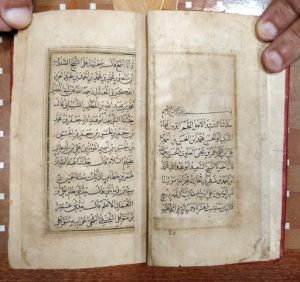
I was lucky to be involved in the Muslim World Manuscript project, helping with the cataloging and the description of some of the manuscripts. During my work, I was blown away to encounter one particular manuscript, namely a copy of al-Ṣaḥīfat al-Sajjādīyah (MS Or 127), which is a compilation of supplications attributed to ʻAlī b. al-Ḥusayn (d. 95 AH/713 CE). As this Ṣaḥīfah is attributed to ʻAlī b. al-Ḥusayn (d. 95 AH/713 CE), it is extremely well-regarded amongst Shi’i Muslims; Twelvers, Zaydis, and Isma’ilis unanimously treat it as an authentic work. I became very interested in the al-Ṣaḥīfat al-Sajjādīyah (MS Or 127) and wrote two research papers on it. I have traveled to three Middle Eastern countries, Iran, Iraq, and Egypt in order to examine other Ṣaḥīfah manuscripts in the respective collections of those countries. One interesting aspect regarding the manuscript found in our collection (MS Or 127) which dates to the year 1083 AH, is that it possesses a rather rich and colorful isnād (chain of attributions), as the isnād there is not just a list of names but it also contains a multi-page narrative explaining the provenance of the text. In effect however, this narrative works as a soft-polemic against Zaydi Shi’ism in favor of Twelver Shi’ism, which logically seems to be an addition to the original, for why would the Zaydis also revere a text critical of them; so here, provenance and attribution and glossing over it are used as a way to take an intellectual and religious position. Therefore, I took it upon myself to hunt for Ṣaḥīfah manuscripts with isnāds (chains of attributions) that differ with that of MS Or 127. While I could locate varying isnāds in bibliographical dictionaries like Rijāl al-Najāshī of the 4th/10th century, as well as extant manuscripts of excerpts, the oldest being the MS. 12405/2 (dated 416 AH/1025 AH) which is currently held in the Central Library of Astan Quds Razawi in Mashhad, it seems the version found at Columbia with the narrative is in fact the standardized text of the Ṣaḥīfah. However, none of the standardized versions I found could trace attributions further back than the 11th/17th centuries. The oldest Ṣaḥīfah of this kind found in Cairo (Dar al-Kutub) is dated to 1080 AH/1669 CE, in Yemen (Imam Zayd b. ‘Ali Cultural Foundation) it is dated to 1090 AH/1679 CE, and in Iraq (al-Imam al-Hakim Public Library) it is dated to 1042 AH/1633 CE, all during the Majlisī period. Bāqir al-Majlisī (d. 1110 AH/1699 CE), the Safavid Shaykh al-Islām, reports that his father Taqī al-Majlisī (d. 1070 AH/1660 CE) was made aware of this version of the Ṣaḥīfah in a dream, which led him to its discovery in real life. While ascertaining the veracity of this account might be impossible, what we can however derive from it is that the societal position Bāqir al-Majlisī held definitely boosted the credibility and acceptance of this version of the Ṣaḥīfah en masse. All of this serves as an example of how power can shape public thought and discourse. It is truly fascinating to see how power dynamics in knowledge production could be gleaned and reconstructed from such sources of material culture.
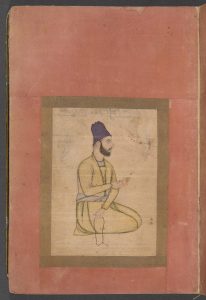
Can you please give us some brief background regarding the intellectual questions you are focusing on and their wider significance in the field?
The chief intellectual question I am focusing on in my research is how center-periphery dynamics developed and crystallized within the trajectory of Twelver Shi’ism as a school of jurisprudence. Historically, the shrine cities of Najaf and Karbala in Iraq served as critical and dynamic intellectual centers for the Twelver Shi’i community. From the 13th century to this day they have maintained this role, and almost all the major formative debates occurred therein, be it the Uṣūlī versus Akhbārī conflict between the camps of Muḥammad Bāqir [Waḥīd] al-Bihbāhānī (d. 1205/1791) and Shaykh Yūsuf al-Baḥrānī (d. 1186/1772), or the disputations between the pro-Ṣūfī followers of Ḥaydar-i Āmulī (d. after 787/1385) and the anti-Ṣūfī orthodoxy, to cite a few such formative debates. Now, when it comes to peripheries of the Twelver Shi’i community you have places like North India, geographically very much distant from the shrine cities of Iraq, yet engaging vigorously with the debates and discourses taking place in the center. I am interested in seeing how it was that these ideas traveled and migrated from the center to these peripheries, and how the latter agreed to or pushed back upon these ideas. In order to perform this analysis, I am focusing on the mid- to late-18th century, when the Shi’i princely state of Awadh emerged as one of the most powerful and wealthy forces in North India. This princely state sponsored native North Indian Twelvers to study in the shrine cities of Iraq, and also funded the upkeep of the sacred sites and seminaries there. The legacy of this period is preserved in a rich collection of manuscripts spread across Najaf and Karbala as well as the manuscript libraries of South Asia, including the collections that traveled to Britain during colonialism. Therefore any further research I undertake would require extensive travel.

What is the significance of manuscripts and material culture for your learning experience and for teaching in general?
The significance of manuscripts and material culture is crucial in the sense that it opens an avenue of understanding concerning behaviors, practices, ways of being in the world and interests that may not have survived or be appreciated in later societies. Consider, for example, the very production of a manuscript, the conditions necessary to sustain a scribal cultural practice, the materials used in preparing the manuscripts, the support (e.g. paper, papyrus, parchment) or the ink used (e.g. gum Arabic, carbon inks, gold), scribal workshops, skills needed, readership and scholarship centers to support scribal culture, all of these aspects can provide an insight into a specific era for a given society, and what texts, ideas and writers/thinkers it deemed important.
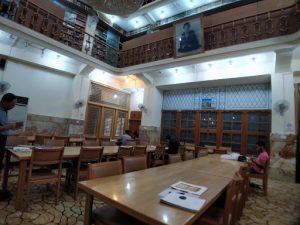
But even more importantly, when it comes to Islamic studies, relatively few primary sources have been critically edited and published; the vast majority of primary sources are still in manuscript form, sitting in collections waiting to be analyzed. Therefore, for the field of Islamic studies to progress, delving into manuscripts and material culture is crucial. I was very fortunate to take Professor Tunç Şen’s class at Columbia, where I became thoroughly informed about the long-lasting, rich tradition of Islamic book production and manuscript collecting.
You have been working with the MWM project, helping us catalog some manuscripts: can you please speak about your experience in his respect: what have you learned? Is there any specific skill you are trying to build?
Working on the MWM project has been a priceless experience, as very few universities have similar collections, and even fewer allow graduate students like myself to work on them directly. I began working on the David Eugene Smith collection, which is in many ways an “unplanned” collection, with an amazing array of disparate manuscripts. I have thus far cataloged some 20 manuscripts from it. However, noticing that there is an untouched collection separate from that of the Smith collection, namely that of the late Professor Arthur W. Jeffery, I conferred with our supervisor, Peter Magierski, the Middle East and Islamic Studies Librarian, and decided that I would work on those manuscripts instead. Unlike that of David Eugene Smith, Professor Jeffery’s collection is not random at all, instead it is very focused on pedagogy, reflecting his background as an Islamic studies professor. His collection consists almost entirely of Qur’anic, hadith, or fiqh- related manuals, originally intended to inform theological study at the University. There are some 50 manuscripts in this collection, and I have made it a goal to catalog them entirely, having done nearly 25 thus far.
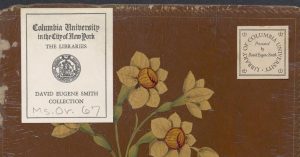
By working on the collections of two scholars (Smith and Jeffery) who have been deceased for several decades now, I can perceive a bit about who they were themselves and the nature of their intellectual leanings and motivations. Smith seems like someone who was fascinated with the Near East but was not necessarily deeply versed in scholarly matters, selecting items based primarily on aesthetic value, whereas Jeffery seems to be very methodological, precise, and careful in his acquisition of manuscripts. I do not know if this perspective counts as a learned skill, but it is something I could not imagine noticing or being able to formulate prior to engaging in this work. While the work can be tedious, manually counting pages and lines of text with the utmost caution, it is at the same time highly rewarding. My eyes get to view things that in many ways have been hidden from the world for decades, and it is a real treat, and an eye opener.
You have recently visited archives and centers of scholarship for scribal culture in the Middle East: can you please briefly describe the resources they hold and their potential significance for researchers and students?
When it comes to Islamic Studies, while there are no doubt plenty of resources in the West, one still needs to engage with the Islamic world itself, especially the historical centers of learning, to be able to engage with the field in a comprehensive and grounded manner. This has not been fully appreciated by many scholars in the West, unfortunately.
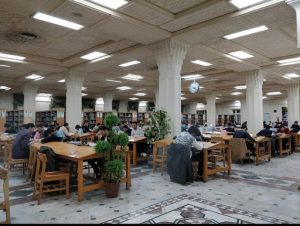
Seminaries such as that of al-Azhar in Cairo and the Ḥawzah in Najaf have been engaged in scholarly activities for a millennium. A millennium of producing and acquiring and collecting irreplaceable texts! Can you imagine? And these have been mostly ignored in recent scholarship. Unfortunately, the centers crucial to my intellectual focus specifically (Shi’ism), based in Iraq and Iran, are regularly mired in internal or external conflicts, meaning that fewer western scholars travel there, ultimately affecting the quality of output in the field as a whole. While I would never suggest going to a war zone, I do however adamantly state that true scholarship requires risk taking, and so recommend that others in the field consider traveling to these places, as this would only elevate the quality of their academic production.
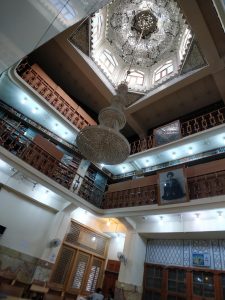
Concerning important repositories of Shi’i literature, the al-Imam al-Hakim Public Library in Najaf and the Central Library of Astan Quds Razavi in Mashhad are two that deserve special attention by western researchers. In physical form both libraries are extremely different: the former is modest, reflecting the down years of the Saddam era, whereas the latter is an expansive marvel, depicting the strength of the religious establishment in Iran. Likewise, they mirror the trends of the Ḥawzah seminaries of these nations: whilst Najaf sticks to traditional methods, Qumm and Mashhad forge ahead in adopting modern styles of pedagogy and rely more heavily on technology.
Can you comment on the significance of teaching Islamic cultures and philosophy within the context of material culture? What, in your opinion, could be transformative for the field?
In my view, unfortunately, when it comes to teaching Islamic and Islamicate courses in Western academic institutions, not enough attention is paid to material culture. For example, while it is crucially important to read fiqh manuals when studying Islamic law, is it not naturally as important to examine court records and written fatwas to understand how the written codes affected people directly? In many ways the common Muslim disappears in our study of Islam, and this should not be the case. At institutions like Columbia, where we are blessed with such large manuscript collections, faculty need to find ways to incorporate them into their curricula. Making manuscripts and primary sources more accessible, especially digitally, and improving their cataloging, and affording students an opportunity to become familiar with Islamic scribal culture is essential for advancing the field. Vibrant and dynamic engagement with manuscripts and primary sources will allow for the production of a deeper, broader, richer, more connected understanding of Islamic cultures and societies.
For inquiries regarding the Muslim World Manuscript project at Columbia, please contact: Jane Siegel: Librarian for Rare Books & Bibliographic Services: RBML: jane.siegel@columbia.edu; Peter Magierski: Middle East and Islamic Studies Librarian: pm2650@columbia.edu, Kaoukab Chebaro: Global Studies, Head: kc3287@ columbia.edu
Kaoukab Chebaro, Global Studies, Head, Columbia University Libraries
One thought on “The MWM Project: An Interview with Shabbir Agha Abbas; Poring over Manuscripts for a broader and more vibrant understanding of Islamic Studies”